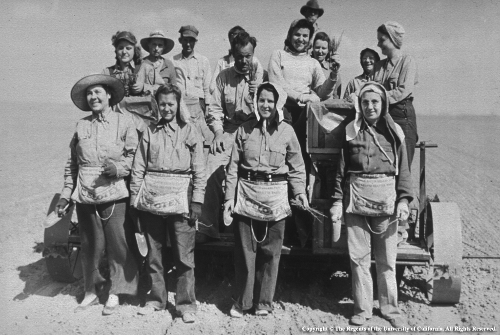Strawberries
Powerpoint Presentations from Fumigation Alternative Symposium Now Available
Most of the Powerpoint presentations from yesterday's Fumigation Alternative Symposium are now available:
http://ucanr.edu/2013 fumigation alt symposium
Really great meeting by the way, many thanks to the Strawberry Commission for organizing, to each of the presenters for presenting and participants for coming out and being part of it!
Immigration Reform and California Agriculture
Really great article here by UC Davis' Philip Martin concerning immigration reform bills and what they might mean for the labor situation in the agriculture of California.
http://californiaagriculture.ucanr.org/landingpage.cfm?article=ca.v067n04p196&fulltext=yes
Interestingly, it looks like the longer periods of US employment permitted by one bill, S 744, as well as the opportunity for immigrants to bring family with them, could result in a larger number of people coming here from Asia to work.
Might be a signal to start learning Mandarin Chinese.

What might the immigration reform bills making their way through Congress mean for field labor in California?
A Word About these Cold Temperatures and our Berries
As we look to be in for some freezing temperatures for the next couple of days on the Central Coast, it is a good time to review what sort of frost protection would be necessary for our berry crops.
The real key right now is that pretty well our entire berry crop is free of flowers, which would be the plant organ most susceptible to freezing and subsequent loss. With some exceptions, raspberries and blackberries have dropped their leaves and are growing very little, if at all. With strawberries, there might be some concerns about newly emerged leaves experiencing some frost damage, but the temperatures being discussed right now being in the low 20’s, I just don’t see there being any freeze damage to the crown and subsequently damaging the plant for the long term.
Be that as it may, it is still good to know what to do if the concern does arise about a frost causing damage to a berry crop. I had a great discussion with my colleague Steve Tjosvold at the office this morning, and really the best option is to load the bed with water during the day by irrigating it (drip is fine), allowing the bed to accumulate heat which will then be radiated out of the moistened soil during the night, keeping the immediate environment around the plants warmer than the ambient freezing temperatures.
For fuller, in depth discussion, see the excellent summary attached below:
Organic management of spotted wing drosophila - Webinar
Those of you interested in organic management of spotted wing drosophila might want to catch this one.
It's planned for February 11, 2014:
The Deal with Phosphite Fertilizers
Here is another interesting aspect of plant nutrition drawn from the October 23 Soil Fertility Short Course at UC Davis.
Phosphorous (P), an essential element for plants, does not occur alone in nature and rather it combines with oxygen and hydrogen. Bonded with four oxygen atoms P makes phosphate, and when bonded with three atoms of oxygen and one atom of hydrogen, P forms phosphite.
The fully oxidized phosphate (the one with four oxygen atoms) is the most stable form of P in the environment, and is preferentially taken up by microbes and plant roots. Then again, phosphate is adsorbed to soil particles more than phosphite, meaning it is less available. However, it does not necessarily follow that this enhanced availability of P via phosphite results in more uptake by plants, but even so, fertilizer formulations of phosphite plus calcium, magnesium or potassium have been formulated with the intent of taking advantage of this greater solubility in the soil.
Several studies examining a greater availability of P through phosphite have found that when phosphite is applied at an equivalent rate of P to phosphate fertilizer, it consistently underperformed when measured in terms of crop productivity, especially in the first year of cropping. In the way of explanation, the slower oxidation process of phosphite to the plant-root preferred phosphate, may be part of the equation of why the phosphite is not as effective as phosphate, in spite of having greater mobility.
In lay terms we can say, yes, phosphite might more available to plants in the soil, but they don’t want it as much as they want phosphate.
On the other hand, foliar applications of phosphite have shown that, while it can be converted to phosphate on the leaves by microbes living there, it is more readily absorbed into the foliage of some crop plants like citrus and avocados. Phosphite application (usually once at pre-bloom and perhaps a second time later in the season) to the foliage of avocados or oranges has resulted in more flowers, greater fruit yield and size, total soluble solids and anthocyanin concentrations.
For further reading, see the paper below, which among other things implies that the positive results experienced in oranges and avocados could be replicated in berries…
http://www.spectrumanalytic.com/support/library/pdf/Phosphite_Fertilizers_What%20are%20they.pdf

